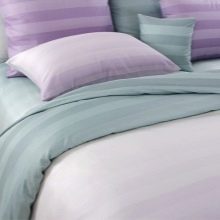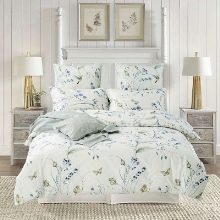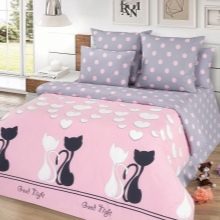Which is better for bed linen: satin or poplin?
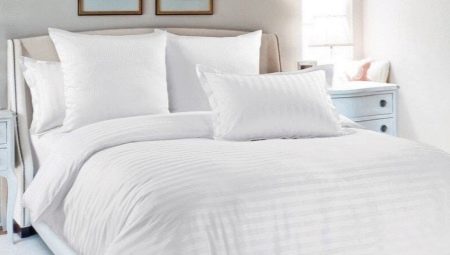
Today, various types of fabrics are used in the production of bed linen. Materials such as satin and poplin are very popular and in demand. They make excellent bedding with many benefits. In this article, we will understand what is best for bedding - satin or poplin.
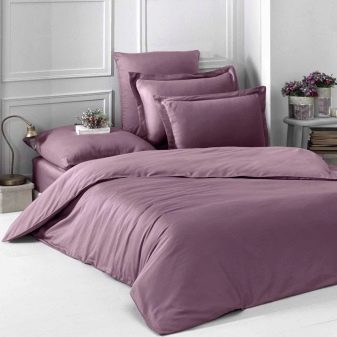
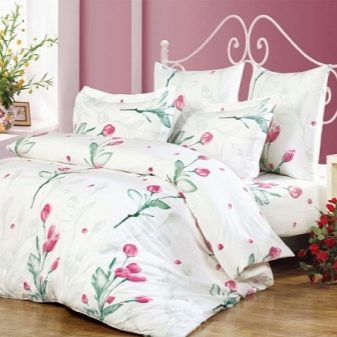
Appearance and texture of materials
Today, many manufacturers produce a wide range of high-quality satin or poplin products. Bedding made from these fabrics has been in great demand for many years.
Both satin and poplin are natural materials. They are based on 100% cotton. This indicates that the fabrics in question are environmentally friendly and absolutely safe.
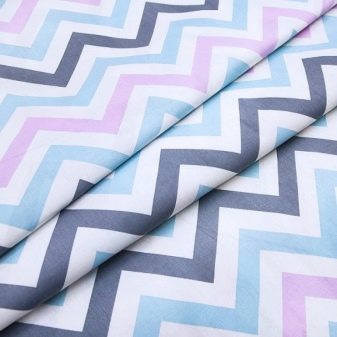
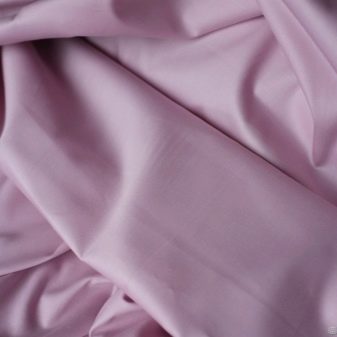
Both woven fabrics are characterized by these characteristics.
- Both satin and poplin demonstrate a sufficient level of durability. They are not prone to creeping into individual fibers. The materials have a texture that does not shrink. Tearing satin and poplin is quite difficult.
- Both materials have good breathability. Resting and getting enough sleep on satin or poplin bedding, human skin can “breathe” unhindered.
- The structure of these materials is hygroscopic. For this reason, satin and poplin products can easily absorb moisture.

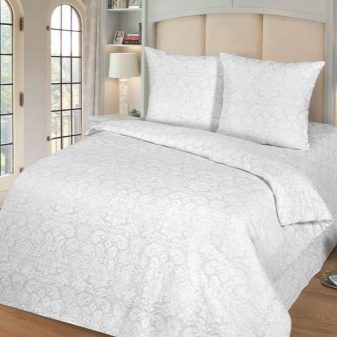
Poplin differs in that it has a softer, denser and tactilely pleasant texture that you want to touch. Satin is the undisputed leader in the textile market, and in terms of density, strength and flowing texture, it is more suitable than other materials for the production of high-quality bed linen.
This type of textile can easily withstand up to 300 washes, guarantees a long service life (at least 6 years), while maintaining its aesthetic appearance, brightness of colors and a pleasant texture.
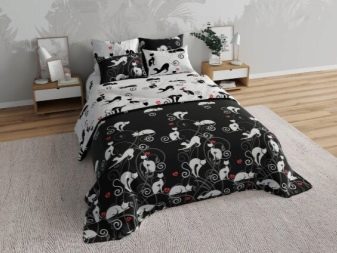
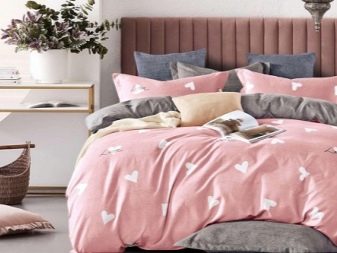
What is the difference in density?
Density is an important criterion in the selection of quality bedding. It is from this parameter that the degree of strength of the products depends. So, the density index of a material such as poplin starts at 120 g / m2. For satin, this value can vary within 110-180 g / m2. Comparing these characteristics of two popular woven fabrics, it is difficult to come to a final conclusion which of them is the leader in terms of density.
Much here depends on the specific manufacturer that produces satin or poplin bedding. The type of fabric also plays an important role. If we consider these fabrics only visually, then you can see that satin looks less dense, but this is due only to its prevailing smoothness and flowing texture.


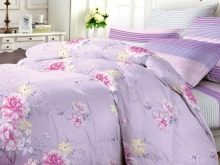
Comparison of other characteristics
Poplin and satin can be compared not only in their appearance and level of density, but also in other important parameters. When choosing high-quality bedding, it is important to pay attention to its physical properties, tactile sensations and much more.
The listed parameters are directly influenced by the woven material from which the bedding is made. Below is a comparison of the most important characteristics possessed by materials such as satin and poplin.
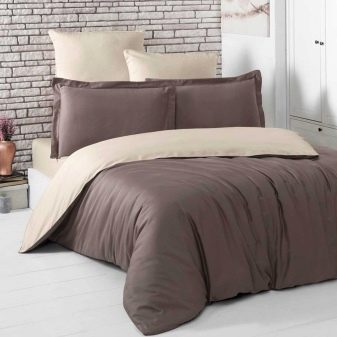
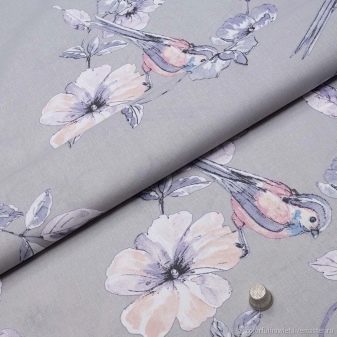
Physical properties
When choosing a quality bedding set, it is very important to pay due attention to its physical properties. Let's consider the main parameters typical for satin and poplin products, which are produced by current manufacturers.
- Not the least role is played by the air permeability of the products. Satin fibers let air through at times worse. The reason for this is that satin things are distinguished by a complex weave of threads treated with special chemical compounds. That is why people who like "dry" heat more may find a satin bed completely uncomfortable.
- Poplin's breathability is higher. This woven fabric is much more breathable, allowing the wearer's skin to breathe freely. In addition, the person does not feel as if they have visited a steam room.
- Another important parameter is the hygroscopicity of the materials from which bed linen is made. This property is responsible for the ability of textiles to absorb and release liquids. Poplin also turns out to be more practical in this matter.
- Take, for example, a satin duvet cover, and washing it by hand in a basin, this can lead to a lot of different complications. They will arise due to the fact that the material is very poorly permeable to both air and moisture.
- Anti-static is a property that is responsible for the potential for static electricity to accumulate in materials. Both satin and poplin products are not subject to electrification. They do not spark at all during operation.
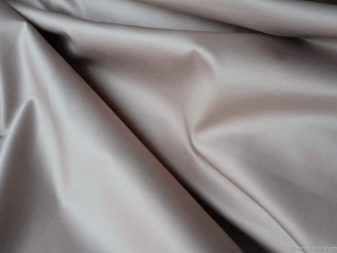
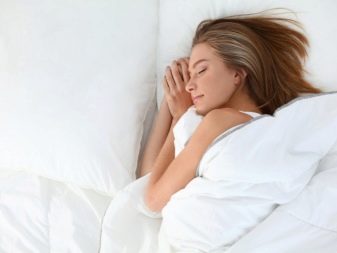
Tactile sensations
The considered woven materials differ from each other not only in physical characteristics, but also in tactile sensations. Let's compare satin and poplin by this criterion.
- Both types of fabrics boast a high level of softness and sufficient lightness.
- Satin also boasts a silky surface that is very pleasant to touch. Poplin cannot boast of the same quality.
- Poplin seems to be much denser to the touch and at first glance.Satin looks more subtle because of its texture.
- Both materials offer a reasonable level of comfort, but satin bedding can show some coolness.
Before choosing a certain set of underwear, this feature must be taken into account.
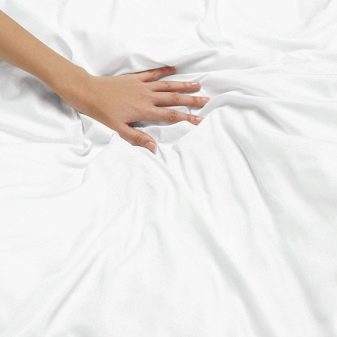
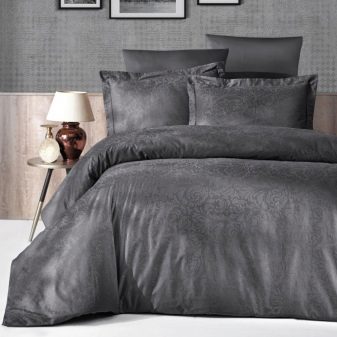
Dyeing
The materials under consideration differ from each other in the technology of their coloring. Satin is made from initially dyed fibers, but there are also some printed varieties of products. As a result, very bright and rich things appear on store shelves, decorated with many beautiful and most clear details.
If we consider the peculiarities of coloring poplin, then here all procedures are a little different. In this case, the pattern is applied to the finished woven fabric. The color is more modest and less bright. Often the color on poplin products turns out to be a little dull, and over time it often fade.
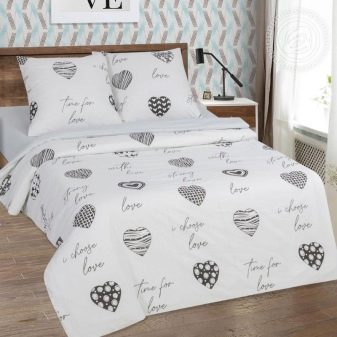
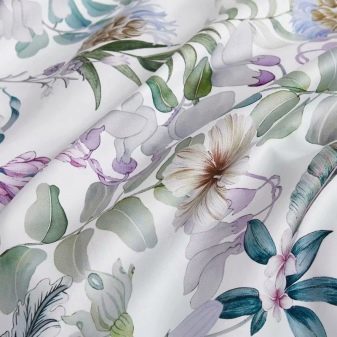
Difficulty leaving
Most buyers, when choosing the optimal set of bed linen, start from the level of complexity of caring for it. That is why satin products are in great demand. This woven fabric does not require very difficult and time-consuming maintenance. Satin washes perfectly, even if you use lukewarm water. Such linen is not subject to creasing, and also dries very quickly. As a rule, satin products do not need ironing.
Poplin products are characterized by almost the same maintenance benefits as satin options. The exception is two main disadvantages.
- Poplin items need ironing after washing. If you neglect these manipulations, the linen will look sloppy and untidy.
- When washed at high temperatures, poplin products can quickly fade, losing the beauty and attractiveness that were originally there.
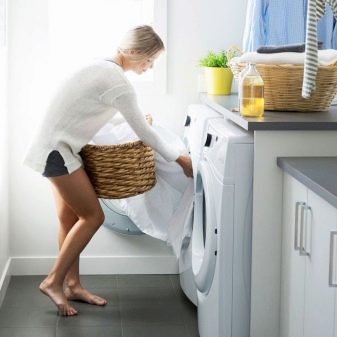

Price
Often, torn between poplin and satin, people look at the cost of linen made from these materials. Different buyers choose different options. However, poplin bedding sets are usually cheaper. Moreover, the difference with satin products can be significant. It often reaches 35-45%. The reason for such a significant difference is easy to explain, because the process of producing poplin itself is simpler and faster.
The cost of ready-made kits is also influenced by the additives that are used during their production. Synthetics significantly lowers the price of bedding. However, their quality also suffers. Wool and silk guarantee much higher strength of finished products, as well as their lightness and smoothness. But at the same time, woolen or silk options are many times more expensive. Because of this, pure satin can sometimes be cheaper than premium poplin, which contains expensive additives.
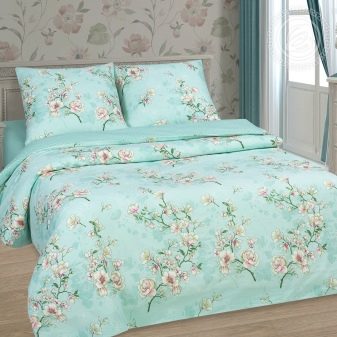

What to choose?
Knowing exactly about all the characteristics and parameters of satin and poplin products, many buyers ask a reasonable question: which option is better to choose. Both of these materials are unlikely to be very disappointing. Products made of high-quality satin are most often chosen by those users who are ready to pay well for the high quality of the purchased products.
Poplin bedding sets will be a win-win option for those people who want to buy good products at an affordable price. It is for these simple reasons that each buyer must independently decide which material suits him best, because everything depends on the capabilities and wishes of the person.
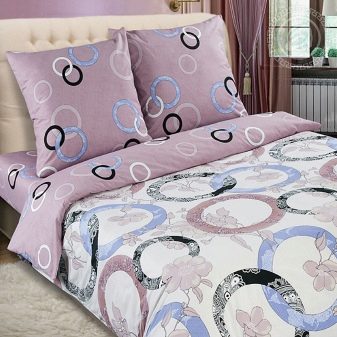
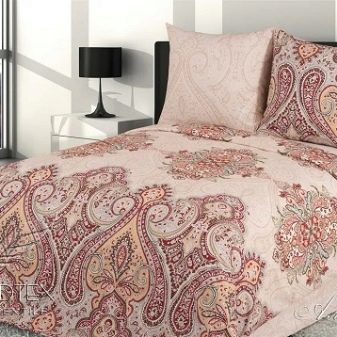
Review overview
People leave various responses about bedding sets made from the materials considered. First, let's find out what they like best about quality satin and poplin fabrics:
- many people are happy with the affordable cost of kits, especially those made from cheap poplin;
- attracts buyers and a wide range of both satin and poplin products, coupled with a beautiful design;
- good tactile sensations have been noted by many users, however poplin sets seem a little harsh to some people;
- the natural composition of the considered products pleases the majority of buyers who purchase them;
- a lot of rave reviews are associated with bright and rich colors and patterns of brand kits made from high-quality satin;
- bedding made of these fabrics is easy to iron, which pleased many users;
- the quality of satin products discourages many people who talk about their lightness and pleasant silkiness;
- many positive reviews are associated with the durability of bedding sets, especially those made of satin;
- in most cases, high-quality and branded products from the fabrics in question do not actively shed after proper washing.
People leave a "sea" of rave reviews about bedding made of both types of fabrics. True, people like the attractiveness and brightness of satin sets more than the color and design of poplin "competitors".
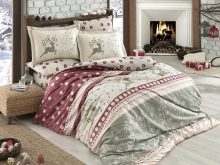

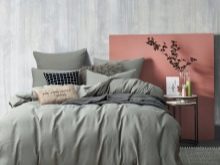
Now let's find out why customers don't like such underwear:
- some buyers find it difficult to find euro-size poplin sets;
- sometimes people are faced with the formation of pellets on poplin;
- some users were upset that their satin linen quickly faded after several washes;
- more affordable poplin products often seem tough and rude to many consumers, which is why sleeping on them is not always comfortable;
- in rare reviews, people write about unpleasant chemical odors that come from bedding made from the considered woven fabrics;
- the cost of satin linen does not suit many consumers;
- tailoring of poplin products does not satisfy the needs of buyers much more often in comparison with satin products.
In many reviews, users do not note a single drawback of satin or poplin products.
